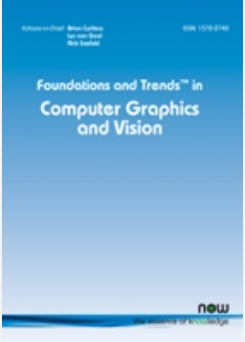神经数据压缩导论
IF 9.3
Q2 COMPUTER SCIENCE, INTERDISCIPLINARY APPLICATIONS
引用次数: 49
摘要
神经压缩是神经网络和其他机器学习方法在数据压缩中的应用。统计机器学习的最新进展为数据压缩开辟了新的可能性,允许使用强大的生成模型(如归一化流、变分自编码器、扩散概率模型和生成对抗网络)从数据端到端学习压缩算法。本文旨在通过回顾信息论(例如,熵编码,率失真理论)和计算机视觉(例如,图像质量评估,感知度量)的必要背景,并通过迄今为止文献中的基本思想和方法提供策划指南,向更广泛的机器学习受众介绍这一研究领域。本文章由计算机程序翻译,如有差异,请以英文原文为准。
An Introduction to Neural Data Compression
Neural compression is the application of neural networks and other machine learning methods to data compression. Recent advances in statistical machine learning have opened up new possibilities for data compression, allowing compression algorithms to be learned end-to-end from data using powerful generative models such as normalizing flows, variational autoencoders, diffusion probabilistic models, and generative adversarial networks. The present article aims to introduce this field of research to a broader machine learning audience by reviewing the necessary background in information theory (e.g., entropy coding, rate-distortion theory) and computer vision (e.g., image quality assessment, perceptual metrics), and providing a curated guide through the essential ideas and methods in the literature thus far.
求助全文
通过发布文献求助,成功后即可免费获取论文全文。
去求助
来源期刊

Foundations and Trends in Computer Graphics and Vision
COMPUTER SCIENCE, INTERDISCIPLINARY APPLICATIONS-
CiteScore
31.20
自引率
0.00%
发文量
1
期刊介绍:
The growth in all aspects of research in the last decade has led to a multitude of new publications and an exponential increase in published research. Finding a way through the excellent existing literature and keeping up to date has become a major time-consuming problem. Electronic publishing has given researchers instant access to more articles than ever before. But which articles are the essential ones that should be read to understand and keep abreast with developments of any topic? To address this problem Foundations and Trends® in Computer Graphics and Vision publishes high-quality survey and tutorial monographs of the field.
Each issue of Foundations and Trends® in Computer Graphics and Vision comprises a 50-100 page monograph written by research leaders in the field. Monographs that give tutorial coverage of subjects, research retrospectives as well as survey papers that offer state-of-the-art reviews fall within the scope of the journal.
 求助内容:
求助内容: 应助结果提醒方式:
应助结果提醒方式:


